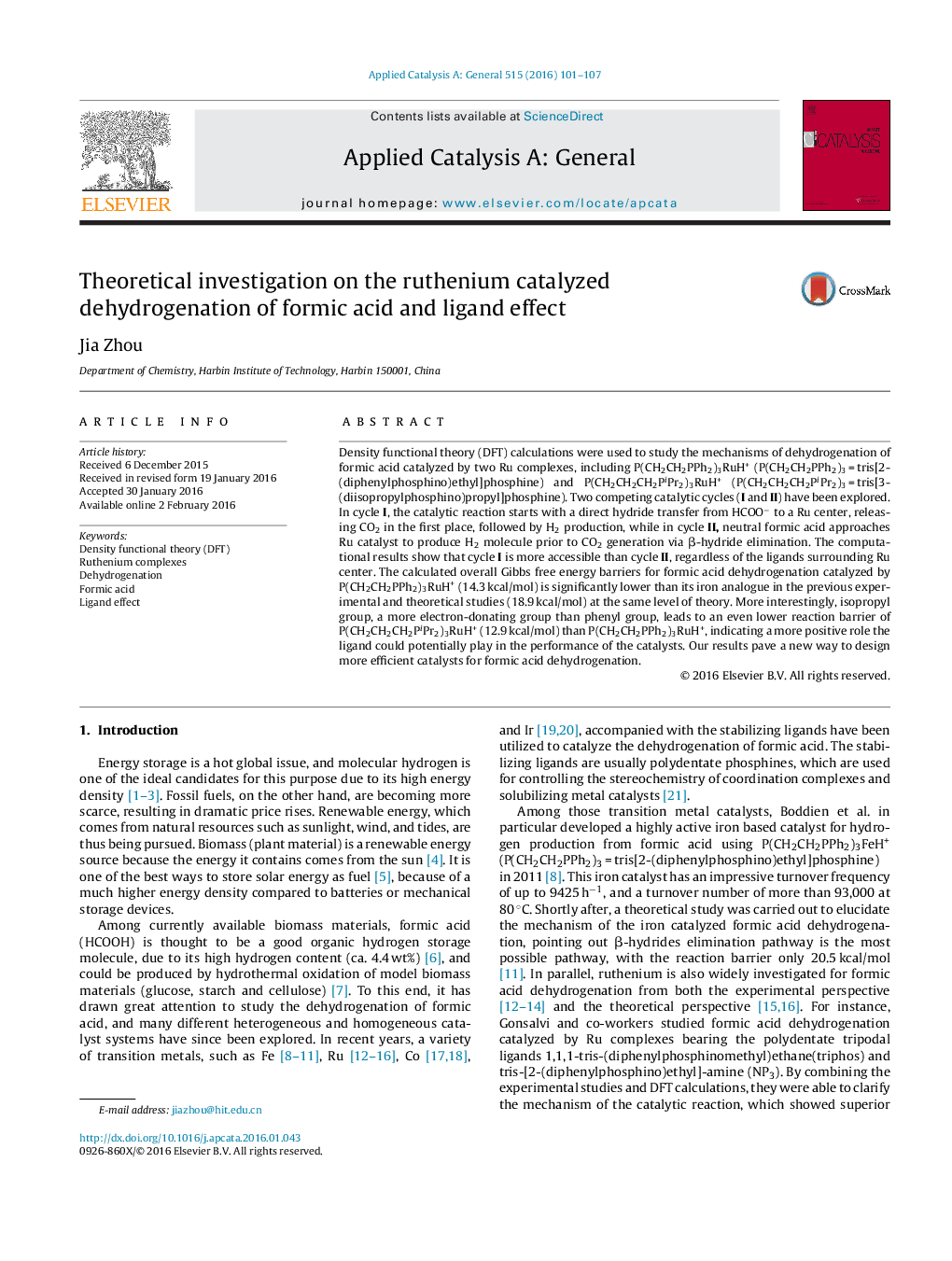| Article ID | Journal | Published Year | Pages | File Type |
|---|---|---|---|---|
| 38867 | Applied Catalysis A: General | 2016 | 7 Pages |
•Dehydrogenation of formic acid catalyzed by Ru complexes has been studied based on first-principles calculations.•P(CH2CH2PPh2)3RuH+ shows a significantly lower reaction barrier (14.3 kcal/mol) than its iron analogue (18.9 kcal/mol), and the latter was investigated by both experiments and theoretical calculations.•Isopropyl group, a more electron-donating group than phenyl group, results in an even lower reaction barrier of P(CH2CH2CH2PiPr2)3RuH+ (12.9 kcal/mol) than P(CH2CH2PPh2)3RuH+, indicating a more positive role the ligand could play in the performance of the catalysts.
Density functional theory (DFT) calculations were used to study the mechanisms of dehydrogenation of formic acid catalyzed by two Ru complexes, including P(CH2CH2PPh2)3RuH+ (P(CH2CH2PPh2)3 = tris[2-(diphenylphosphino)ethyl]phosphine) and P(CH2CH2CH2PiPr2)3RuH+ (P(CH2CH2CH2PiPr2)3 = tris[3-(diisopropylphosphino)propyl]phosphine). Two competing catalytic cycles (I and II) have been explored. In cycle I, the catalytic reaction starts with a direct hydride transfer from HCOO− to a Ru center, releasing CO2 in the first place, followed by H2 production, while in cycle II, neutral formic acid approaches Ru catalyst to produce H2 molecule prior to CO2 generation via β-hydride elimination. The computational results show that cycle I is more accessible than cycle II, regardless of the ligands surrounding Ru center. The calculated overall Gibbs free energy barriers for formic acid dehydrogenation catalyzed by P(CH2CH2PPh2)3RuH+ (14.3 kcal/mol) is significantly lower than its iron analogue in the previous experimental and theoretical studies (18.9 kcal/mol) at the same level of theory. More interestingly, isopropyl group, a more electron-donating group than phenyl group, leads to an even lower reaction barrier of P(CH2CH2CH2PiPr2)3RuH+ (12.9 kcal/mol) than P(CH2CH2PPh2)3RuH+, indicating a more positive role the ligand could potentially play in the performance of the catalysts. Our results pave a new way to design more efficient catalysts for formic acid dehydrogenation.
Graphical abstractFigure optionsDownload full-size imageDownload high-quality image (128 K)Download as PowerPoint slide
